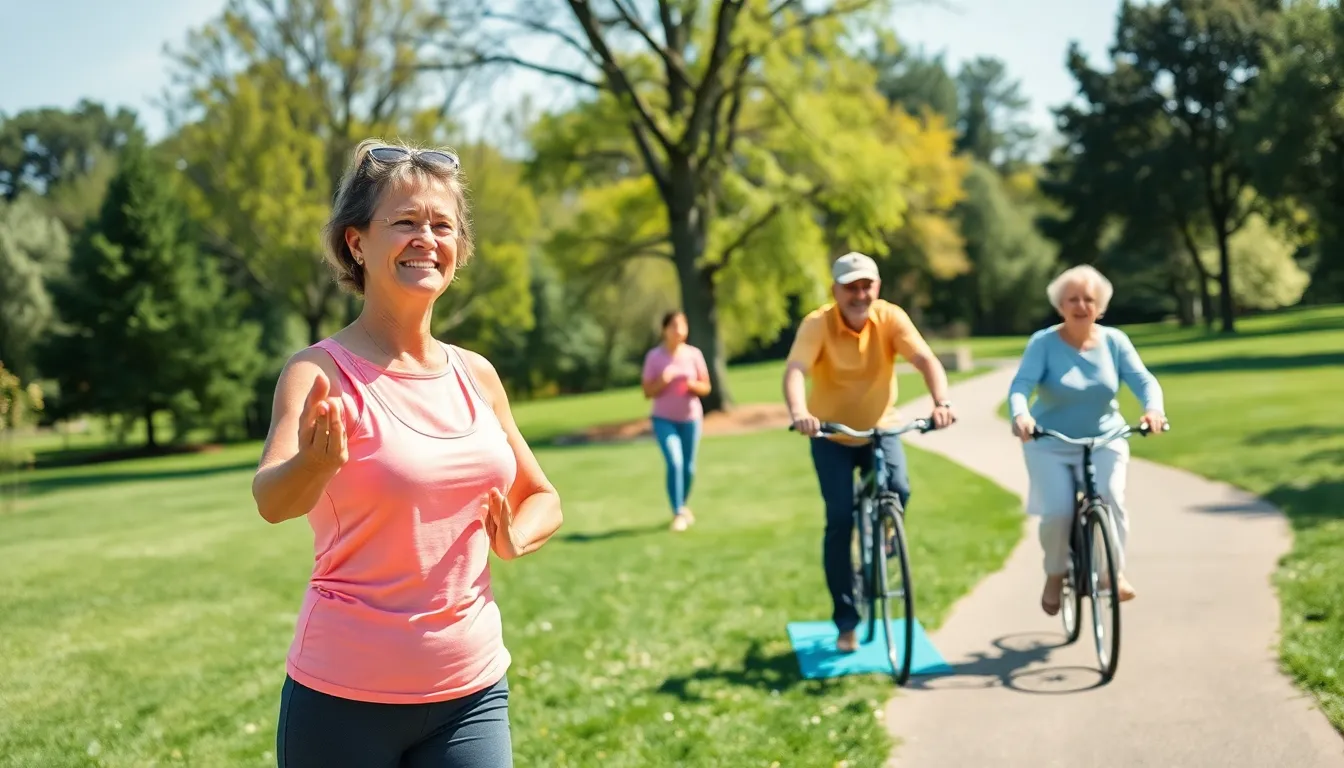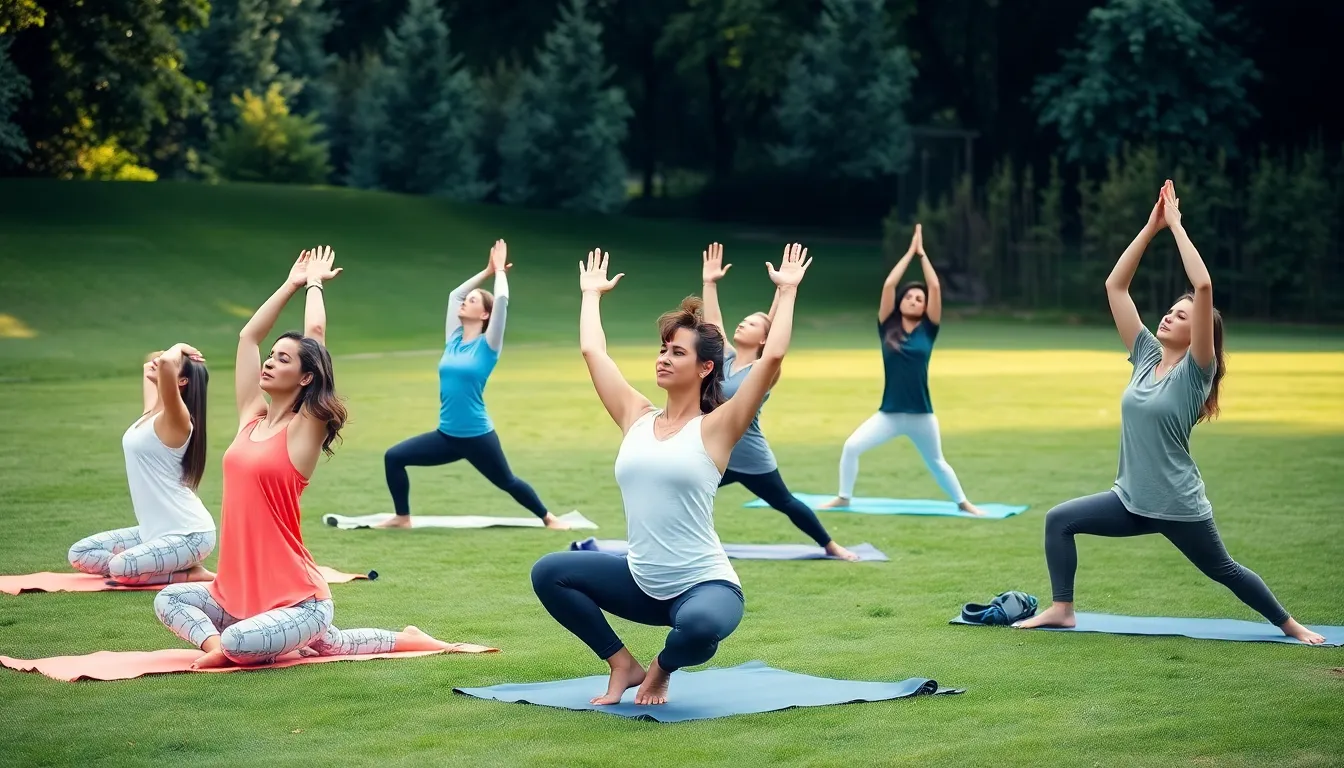In a world where high-intensity workouts dominate the fitness scene, low-impact exercise offers a refreshing alternative. It’s designed to minimize stress on joints and muscles while still delivering effective results. This approach appeals to a wide range of individuals, from seniors seeking gentle movement to busy professionals looking for sustainable fitness options.
Low-impact exercises can enhance overall health, improve flexibility, and boost cardiovascular fitness without the risk of injury associated with high-impact routines. Whether it’s swimming, cycling, or yoga, these activities provide an accessible path to wellness that anyone can embrace. Discovering the benefits of low-impact exercise might just change the way people think about staying fit.
Table of Contents
ToggleWhat Is Low-Impact Exercise?
Low-impact exercise refers to physical activities that minimize stress on the joints while providing effective workouts. These exercises typically feature a gentle motion, avoiding jarring movements common in high-impact routines. Examples include activities such as swimming, cycling, walking, and yoga.
Low-impact workouts accommodate a wide range of fitness levels and age groups. They suit seniors, individuals with joint issues, and those recovering from injuries. Benefits encompass improved cardiovascular health, increased flexibility, enhanced muscle strength, and better overall well-being.
Low-impact exercises promote stamina without causing excessive strain on the body. Many participants find these workouts enjoyable and sustainable. Regular practice not only aids in physical fitness but also supports mental health, reducing stress and anxiety.
This exercise category provides an excellent alternative to more strenuous training. It allows individuals to maintain their fitness effectively while minimizing the risk of injury.
Benefits Of Low-Impact Exercise


Low-impact exercise offers numerous advantages that contribute to overall health and fitness. This section explores the key health benefits and accessibility of low-impact workouts.
Health Benefits
Low-impact exercise promotes cardiovascular health by improving heart function while minimizing stress on the body. Studies show that engaging in low-impact activities, such as swimming or cycling, enhances aerobic capacity without causing joint pain. Increased flexibility occurs through gentle stretching and movements, which maintain muscle elasticity and joint function. Enhanced muscle strength results from resistance training using low-impact methods, allowing for effective toning and strengthening without harsh impacts. Mental well-being improves with low-impact workouts due to endorphin release, reducing stress and anxiety levels while boosting mood.
| Health Benefits | Description |
|---|---|
| Cardiovascular Health | Improves heart function with reduced stress. |
| Increased Flexibility | Maintains joint function through gentle movements. |
| Enhanced Muscle Strength | Tones muscles effectively without harsh impacts. |
| Improved Mental Well-being | Reduces stress and boosts mood via endorphins. |
Accessibility
Low-impact exercise is highly accessible, catering to diverse populations, including seniors and those recovering from injuries. Individuals with pre-existing joint issues find these workouts beneficial, as they accommodate various fitness levels. Classes and programs often offer modifications that allow participation from everyone, ensuring inclusivity. Additionally, available low-impact options, like yoga or tai chi, require minimal equipment and can often be done at home or in community centers, enhancing their appeal.
| Accessibility Features | Description |
|---|---|
| Suited for All Ages | Welcomes participants from seniors to beginners. |
| Joint-Friendly Options | Reduces risk for individuals with joint issues. |
| Minimal Equipment Needed | Facilitates workouts at home or community spaces. |
| Inclusive Modifications Available | Ensures participation through adaptations in exercises. |
Popular Types Of Low-Impact Exercise
Low-impact exercise includes various enjoyable activities that strengthen and maintain fitness with minimal joint stress. Here are some popular types:
Swimming
Swimming is a full-body workout that engages multiple muscle groups while offering buoyancy to support the body. It improves cardiovascular health and builds muscle strength with strokes like freestyle, breaststroke, and backstroke. Water resistance creates a low-stress environment, making swimming suitable for all fitness levels, including individuals with joint concerns or injuries.
Cycling
Cycling, whether stationary or outdoor, promotes cardiovascular fitness and strengthens the lower body without causing impact forces on the joints. This activity allows riders to adjust their intensity based on personal fitness levels, making it accessible for various age groups. Cycling sessions can last from 30 minutes to several hours, providing a sustainable option for endurance training.
Yoga
Yoga combines physical postures, breathing techniques, and meditation, enhancing flexibility while reducing stress. This practice incorporates movements like downward dog and warrior pose to promote strength, balance, and mental clarity. Various styles, such as Hatha or Yin yoga, cater to different preferences, ensuring that individuals of all fitness backgrounds find a suitable practice that supports their well-being.
Tips For Incorporating Low-Impact Exercise
Integrating low-impact exercise into a fitness routine enhances physical well-being while ensuring joint health. Here are some practical tips for getting started effectively.
Finding The Right Routine
- Assess personal fitness levels: Identify individual fitness levels and consult a healthcare professional or trainer if necessary.
- Choose enjoyable activities: Select low-impact exercises, such as swimming, cycling, or yoga, that align with personal interests to promote consistency.
- Start slow: Begin with shorter sessions, gradually increasing duration and intensity as comfort grows.
- Mix different exercises: Incorporate a variety of low-impact activities to keep workouts engaging and to target different muscle groups.
- Listen to the body: Pay attention to how the body responds to exercises, adjusting the routine to avoid discomfort or pain.
Staying Motivated
- Set achievable goals: Establish specific, measurable goals to maintain focus and track progress over time.
- Schedule regular workouts: Allocate time in the weekly schedule for low-impact sessions, treating them as important appointments.
- Join a class or group: Participate in organized classes or groups for accountability and motivation from others with similar interests.
- Track progress: Utilize fitness apps or journals to record workouts, improvements, and how the body feels, reinforcing positive changes.
- Reward achievements: Celebrate milestones, whether large or small, to maintain enthusiasm and commitment to the fitness journey.
Low-impact exercise offers a practical and enjoyable way to stay fit while minimizing injury risk. Its accessibility makes it a great option for individuals of all ages and fitness levels. By engaging in activities like swimming, cycling, and yoga, one can enhance cardiovascular health, improve flexibility, and boost overall well-being without the strain of high-impact workouts.
Incorporating low-impact exercises into a routine not only promotes physical health but also supports mental clarity and stress reduction. With the right approach and mindset, anyone can benefit from the many advantages these gentle yet effective workouts provide. Embracing low-impact exercise can lead to a sustainable fitness journey that prioritizes health and longevity.





